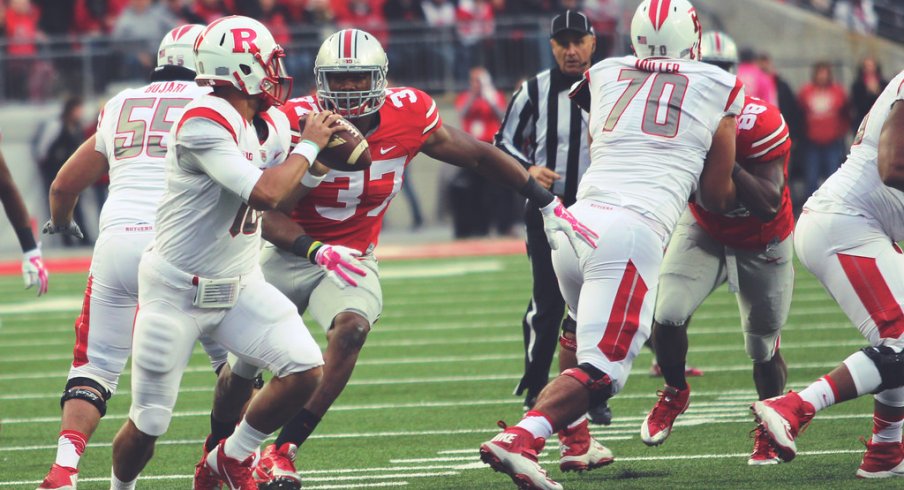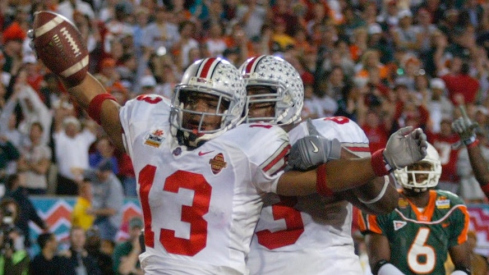Urban Meyer's aggressive approach isn't limited only to the offensive side of the ball.
Though Buckeye defenses had long been solid, dependable units in the 2000's under the direction of coordinators Mark Dantonio, Jim Heacock, and Luke Fickell, rarely did the Buckeyes find themselves amongst the nation's most feared pass rushes during that time. Even as star pass-rushers like Vernon Gholston and Cam Heyward passed through Columbus, the Silver Bullets were known more for a conservative, bend-but-don't-break pass defense more adept at stuffing the run.
But when Meyer took over the program in 2012, the philosophy of the OSU defense took a 180-degree turn. Not only did he and his staff ensure their defensive front would be stocked with five-star talents like Adolphus Washington, Noah Spence, and Joey Bosa, the Buckeyes' play calls would look vastly different when their opponents faced long third-downs. Much as the OSU offense would transform into an aggressive, attacking unit, the defense happily follow suit.
Much has been made about the effect of Chris Ash on the Buckeye defense, having taken over the play-calling duties prior to the 2014 season and solidifying the secondary by implementing quarters coverage. But Ash didn't need to touch a pass rush that had improved greatly under Meyer and Fickell, moving from 71st nationally in sacks-per-game in 2011, to 29th in 2012, seventh in 2013, and finishing their national championship campaign last fall ranked 12th in the metric.
While sacks are certainly momentum-changing events that can shake the psyche of an opponent and electrifying (or demoralizing) the home crowd, all a defense really needs to do on third down is get a stop and force a punt. Whether or not they actually bring down the quarterback for a loss is almost irrelevant, as those few yards lost can easily be made up in the following play's punt. To that end, the Buckeye D created enough errant throws from the opposing QBs to result in a third-down conversion rate of 33.95 percent, the 13th-best mark in the nation in 2014.
Though those blue-chip linemen are able to create pressure on their own, Meyer, Ash, & Fickell don't rely solely on that group to create pressure, often involving the linebacking crew in their blitz packages. While bigger athletes like Joshua Perry and Raekwon McMillan seem like they'd be the ideal choice to send into the opposing backfield, the linebacker called on most often to rush the passer is converted high school quarterback, Darron Lee.
After bulking up to nearly 220 pounds during his redshirt year, Lee still retained his quickness, proving to be a handful for opposing offensive linemen. The New Albany product tallied 7.5 sacks last year in his debut season, the second-highest total on the team.
Lee proved to be the top choice when Ash and Fickell would call for a blitz on early downs, when they'd leave their base 4-3 defense on the field. Sometimes Lee would simply blast through the hole he'd otherwise be responsible for on a 'run blitz', hoping to disrupt any run-blocking schemes or quick pass routes, leaving the Buckeyes with six defenders in pass coverage.
In most situations though, the key to a successful blitz is creating confusion for the opposing offensive line. With the OSU base personnel aligning almost identically on every snap, the Silver Bullets began bringing pressure from Lee in the form of a zone blitz, replacing him in coverage with a defensive lineman, allowing the Buckeyes to maintain a conservative pass defense, keeping everything in front while making things more difficult for the opposition.
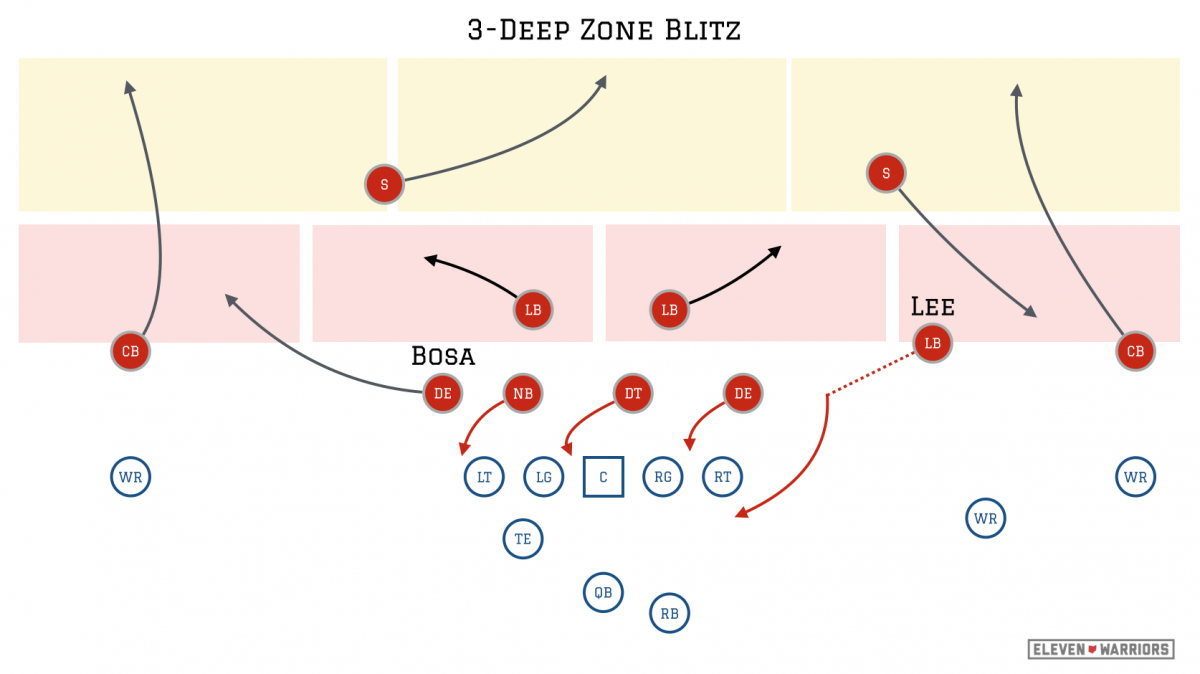
The most creative and aggressive blitz packages show up on third downs, however. Much like nearly every other team in the nation, the Buckeyes feature a 'Double-A' gap blitz, looking to attack the interior of the line.
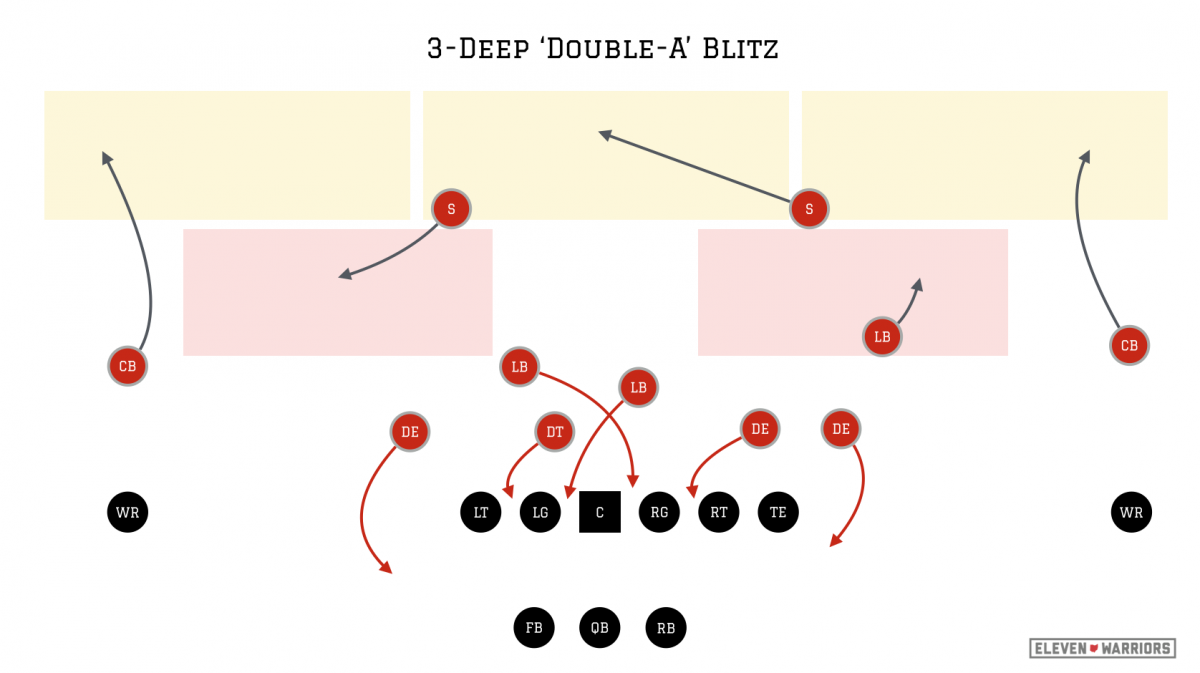
The blitz can cause problems in one of two ways. First of all, the presence of two additional rushers over the center forces the line to adjust their assignments, either by sliding protection to one side or the other to ensure both A-gaps are covered. This often leaves those defensive ends mentioned earlier in one-on-one situations, where they're the most dangerous.
Second, the A-gap blitzes are staggered, with one coming first to engage an unsuspecting center, leaving the second with a theoretical clear path to the quarterback unless the offense keeps in extra protectors.
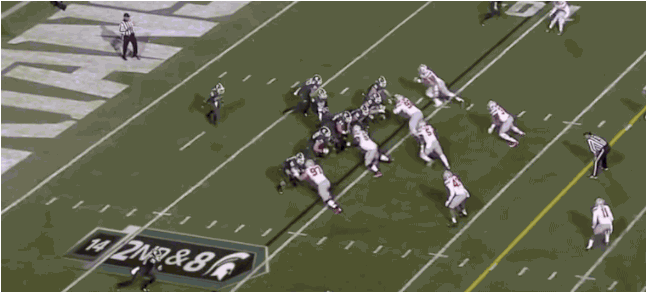
In this example, the Buckeyes bring pressure with six on the 'Double-A' blitz, leaving only five defenders in zone coverage, which sounds like a perilous situation for the defense. However the Spartans' response was to leave both backs in to help pick up the blitz, meaning the Buckeyes only have to cover three receivers. The result is still a rushed, off-target throw as Washington pushes the tackle directly into the QB, winning his individual battle.
The 'blitz-six, drop-five' philosophy is a common one among both pro and college coaches, yet the Buckeyes doubled down on it after adopting a 3-3-5 nickel personnel package on passing downs midway through last season. In these scenarios, the offense is expecting pressure, and it's much easier to predict the path of a down lineman, so an additional upright rusher on the field allows OSU more flexibility.
The additional athleticism brought forth from that extra linebacker paid dividends on its own right, though. Lee's first step on the outside was often too quick for opposing tackles, especially on the offense's right side.

But the interior action of his teammates allows him to have such free runs. With 'crossfire' blitzes that feature twists over both guards, the edge rushers are often unaccounted for.
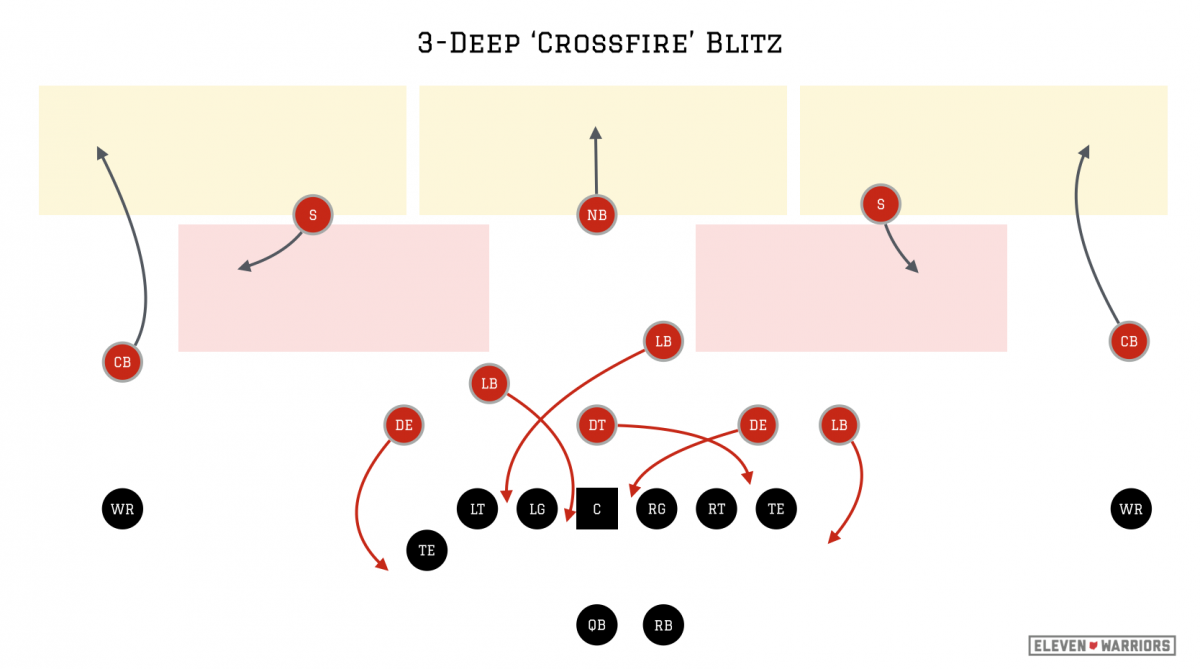
These three-deep, two-under zones do have weaknesses though, particularly on the outside. In order to take advantage though, the offense usually has to wait for a long-developing play like a screen (above) to take shape, or throw a pass that's short of the first down marker. Either way, the Buckeyes are clear favorites to come away with a stop in those situations.
Once the Buckeyes have had some success against getting pressure with the schemes above, they turn up the pressure even further. Instead of showing the offense the same alignments, the Silver Bullets line up in a "UFO" front, with seven players on the line at the snap, including the nickel safety.
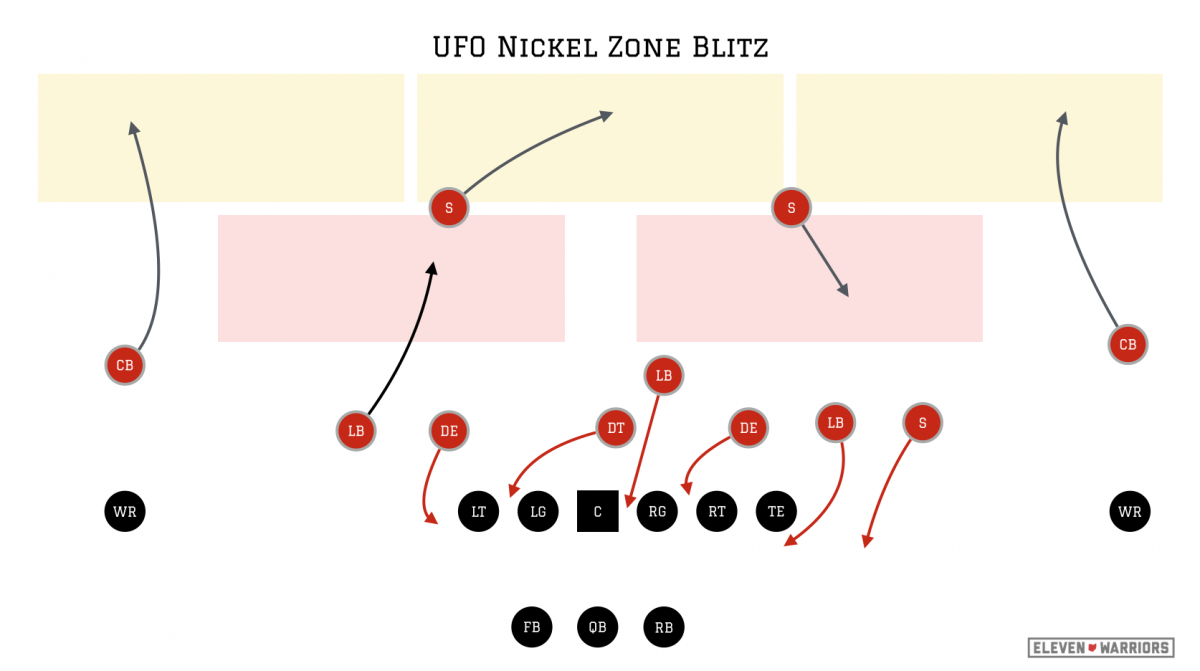
The concept has many names, and even more variations. Sometimes called an 'amoeba' front, the defenders hop in and out of positions moving up and down the line, more often than not in a two-point, upright stance. But the onus is on the offense to determine which of the defenders is blitzing, and if so, where.
Even if the offense keeps a back in to block, giving them six protectors for the expected six blitzers, they don't know which of the seven men on the line isn't coming. No one wants to be the guy standing there, blocking air, yet there seems to always be one (looking at you, No. 55).

With Bosa and Washington up front, and Perry, Lee, and McMillan behind them, the Buckeyes return 5 players with major experience in these 3-3-5 blitz packages. While the exact packages may chance weekly, one can fully expect the schemes to get even more complex...and more fun to watch.
